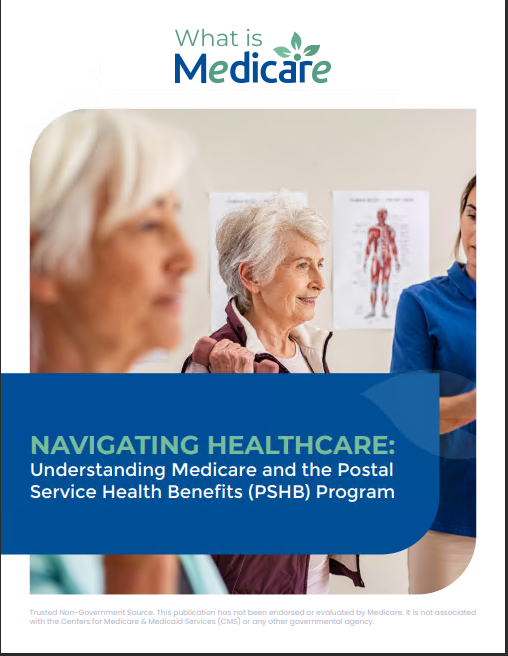Key Takeaways
-
Understanding key Medicare terms helps you navigate enrollment, costs, and coverage options without confusion.
-
Knowing the difference between deductibles, coinsurance, and copayments ensures you can anticipate your out-of-pocket expenses.
Medicare Terms and Definitions That Can Change How You Choose a Plan
Medicare can feel like a maze, and without understanding the key terms, it’s easy to get lost. Whether you’re enrolling for the first time or considering a plan change, knowing what these words mean can impact your choices. Here’s a breakdown of important Medicare terms and why they matter when selecting the right plan for your needs.
Understanding the Basics: Medicare Parts A, B, C, and D
Medicare Part A – Hospital Insurance
This part of Medicare helps cover inpatient hospital stays, skilled nursing facility care, hospice, and some home health services. Most people don’t pay a premium for Part A if they’ve worked and paid Medicare taxes for at least 10 years.
Medicare Part B – Medical Insurance
Part B covers doctor visits, outpatient care, preventive services, and durable medical equipment. There is a monthly premium and an annual deductible that you must pay before Medicare starts covering services.
Medicare Part C – Medicare Advantage Plans
Medicare Advantage (Part C) is an alternative to Original Medicare, combining Parts A and B and sometimes including prescription drug coverage. These plans often have different cost structures and provider networks.
Medicare Part D – Prescription Drug Coverage
Part D helps cover prescription drug costs and is available as a standalone plan or included in some Medicare Advantage plans. Plans vary in terms of drug formularies, premiums, and out-of-pocket costs.
Key Cost Terms You Need to Know
Premium
A premium is the amount you pay each month for Medicare coverage. While some parts of Medicare have no premium, others, like Part B and Part D, require a monthly payment.
Deductible
This is the amount you must pay out of pocket before your Medicare plan starts covering costs. In 2025, the Medicare Part B deductible is $257, and the Part A hospital deductible is $1,676 per benefit period.
Copayment (Copay)
A copayment is a fixed amount you pay for a covered service. For example, you might pay $20 for a doctor’s visit or $40 for a specialist visit. Copays can vary depending on the type of service you receive.
Coinsurance
Unlike a copay, which is a set amount, coinsurance is a percentage of the cost you must pay after meeting your deductible. For example, Medicare Part B generally covers 80% of approved services, leaving you responsible for the remaining 20%.
Out-of-Pocket Maximum
Some plans, including Medicare Advantage, have a limit on how much you’ll pay out of pocket each year. Once you reach this amount, the plan covers 100% of covered services for the remainder of the year.
Enrollment and Eligibility Terms
Initial Enrollment Period (IEP)
This is the seven-month window around your 65th birthday when you can first sign up for Medicare. It begins three months before your birthday month and ends three months after.
General Enrollment Period (GEP)
If you miss your IEP, you can enroll during the General Enrollment Period from January 1 to March 31 each year. However, late enrollment penalties may apply.
Special Enrollment Period (SEP)
Certain life events, like losing employer coverage, may qualify you for a Special Enrollment Period, allowing you to enroll in Medicare outside the standard timeframes.
Annual Enrollment Period (AEP)
From October 15 to December 7 each year, you can review and make changes to your Medicare coverage, including switching plans or enrolling in Medicare Advantage.
Prescription Drug Coverage Terms
Formulary
A formulary is a list of covered prescription drugs under a Medicare Part D plan. Different plans have different formularies, so it’s important to check if your medications are included.
Tiered Drug Pricing
Medicare drug plans categorize medications into tiers. Lower-tier drugs (generic medications) usually cost less, while higher-tier drugs (brand-name or specialty drugs) tend to have higher copays or coinsurance.
Catastrophic Coverage
As of 2025, once your out-of-pocket drug costs reach $2,000, you enter catastrophic coverage, where your Medicare plan covers 100% of your covered medications for the rest of the year.
Additional Medicare Terms to Keep in Mind
Medigap (Medicare Supplement Insurance)
Medigap plans help cover costs not paid by Original Medicare, like copays and coinsurance. These plans are only available if you’re enrolled in Medicare Parts A and B.
Network
Medicare Advantage plans have provider networks. Some plans require you to see in-network doctors, while others may allow out-of-network care at a higher cost.
Prior Authorization
Some services or medications require prior approval from your Medicare plan before coverage is granted.
Extra Help Program
This is a federal program that assists low-income Medicare beneficiaries with Part D prescription drug costs, including premiums and deductibles.
Medicare Assignment
Doctors who accept Medicare assignment agree to accept Medicare-approved amounts as full payment. Seeing a provider who does not accept assignment may result in higher costs for you.
Why These Terms Matter When Choosing a Plan
Understanding these terms allows you to:
-
Compare costs effectively so you’re not caught off guard by unexpected expenses.
-
Make informed choices about drug coverage based on formulary lists and tiered pricing.
-
Choose the right type of plan based on your preferred providers and network restrictions.
-
Avoid late penalties by knowing your enrollment windows.
Make Sense of Your Medicare Choices
Navigating Medicare becomes much easier when you understand the essential terms that influence your costs and coverage. The more you know, the more confidently you can make decisions that suit your healthcare needs.
Need expert guidance? Connect with a professional listed on this website who can walk you through your options and help you find a plan that works best for you.










